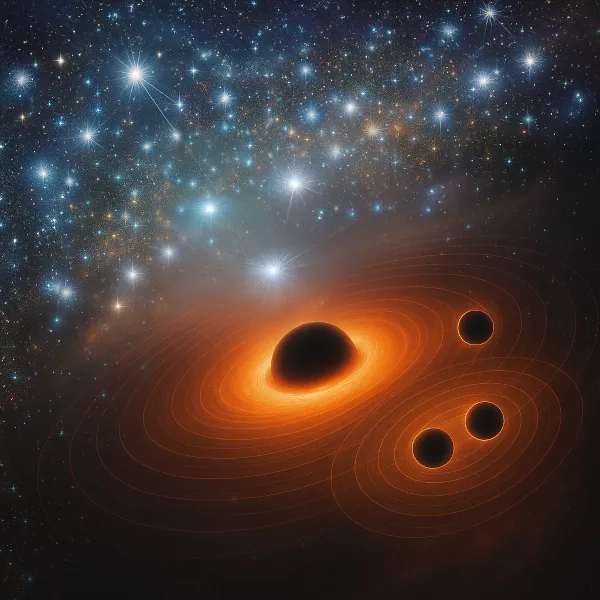Newsroom
From Massive Stars to Gravitational Waves: Michela Mapelli Secures ERC Advanced Grant to Decode Black Hole Origins


Michela Mapelli, STRUCTURES Professor of Computational Physics, receives an ERC Advanced Grant
An ERC advanced grant has been awarded to Michela Mapelli, Professor of Computational Physics at the Centre for Astronomy of Heidelberg University (ZAH). Her project “IMBLACK: Intermediate-Mass Black Holes in the Era of Gravitational-Wave Astronomy” aims to study the formation of intermediate-mass black holes with a mass ranging from 100 to 10'000 times the mass of our Sun.
“Black holes in this mass range are the most enigmatic.” – says Michela Mapelli – “We need them to explain the formation of supermassive black holes lying at the center of most galaxies, but their observational evidence is still scant, and their origin is puzzling. Gravitational-wave and electromagnetic measurements are starting to probe this mass regime, and the next-generation gravitational-wave detectors (Einstein Telescope, Cosmic Explorer, and LISA) will capture their mergers across almost the entire Universe. But even if we had such data tomorrow, we would not be able to interpret them, because theoretical models are still too uncertain.”
To gain insight into the formation of such enigmatic objects, IMBLACK will generate an ambitious set of models of very massive star evolution, runaway stellar collisions, and hierarchical mergers of binary black holes in dense star clusters across cosmic time. The new models will be compared against the data from ground-based gravitational-wave detectors (LIGO-Virgo-KAGRA) and electromagnetic candidates, including the one recently discovered by Heidelberg researchers in the Galactic globular cluster Omega Centauri.
Short Bio
Michela Mapelli studied Physics at the University of Milano-Bicocca and received her PhD in Astrophysics in 2006 from the International School for Advanced Studies (SISSA) in Trieste. After two postdoctoral fellowships in Zurich and Milan, she became permanent research staff at the Italian National Institute for Astrophysics (INAF) in 2011. She was then a fixed-term full professor at the University of Innsbruck (2017-2018), and an associate professor at the University of Padova (2018-2023). In 2023, Michela Mapelli became STRUCTURES Professor of Computational Physics and joined the Institute for Theoretical Astrophysics (ITA) at the Center for Astronomy of Heidelberg University (ZAH) as well as the Interdisciplinary Center for Scientific Computing (IWR). She has received several recognitions for her research on massive stars and black holes, including the MERAC Prize for the Best Early Career Researcher in Theoretical Astrophysics (2015) and an ERC Consolidator grant (2017).
Further Information:
